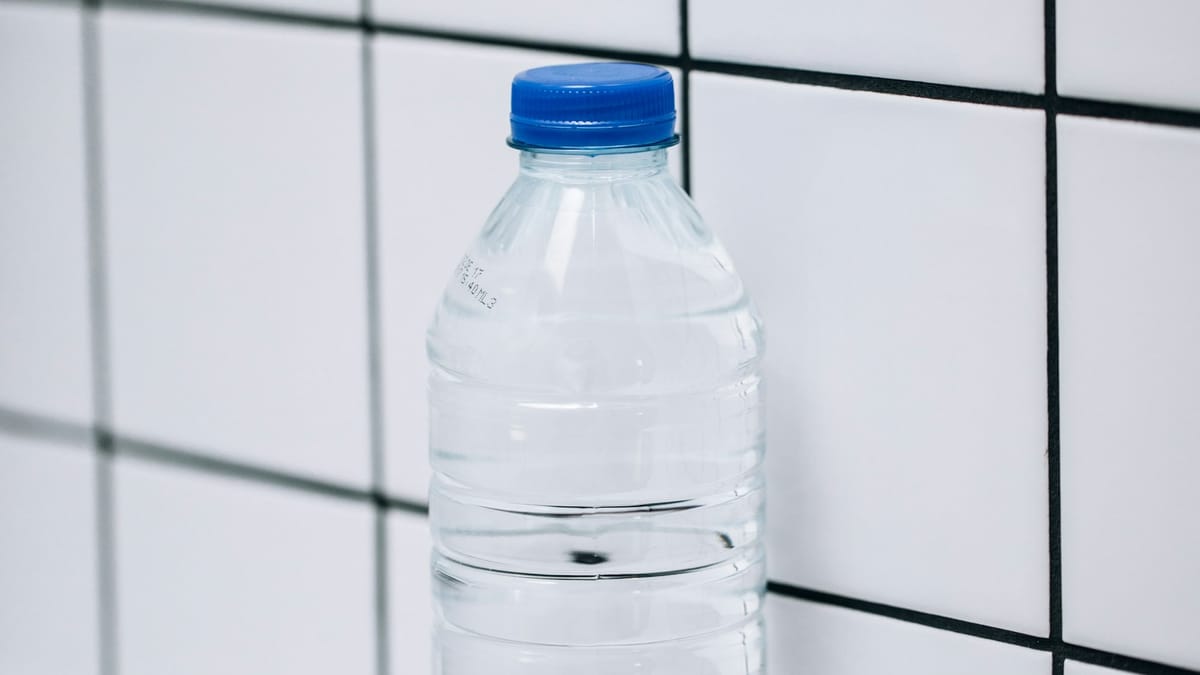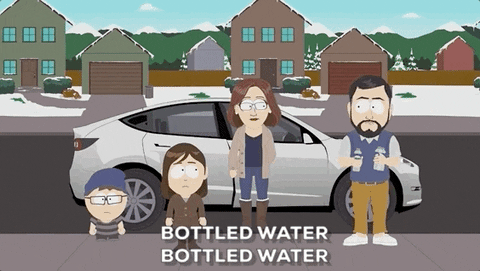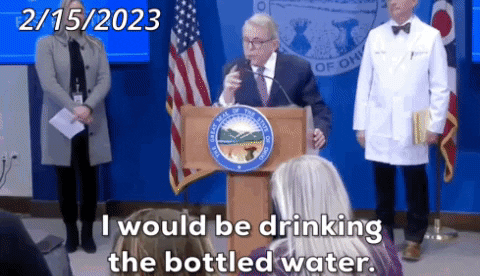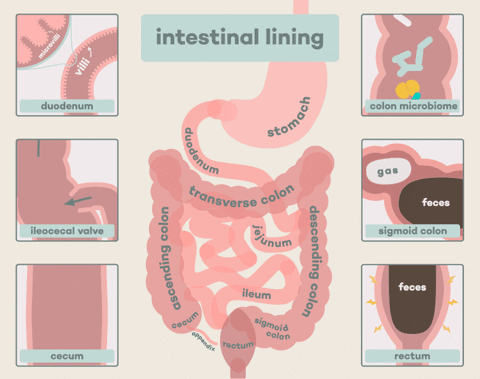Shocking Health Risks of Plastic-Infused Bottled Water
Study Reveals Shocking 370,000 Plastic Particles per Liter

In a world where convenience reigns, plastic bottled water has become deeply ingrained in many people's daily routines. However, new research is shining a spotlight on alarming health risks associated with these popular plastic containers. As plastic bottles degrade over time, they can leach concerning chemicals like Bisphenol A (BPA) into the water.
Additionally, tiny microplastic particles contaminated many bottled water brands, with some samples containing over 300,000 potential hazardous particles per liter. As evidence mounts about impacts on immunity, metabolism, and reproduction, it's time to re-evaluate the safety and sustainability of this ubiquitous bottled water habit. This article will explore the emerging science behind plastic bottled water's health risks and provide recommendations for safer, more eco-friendly alternatives.
Is plastic bottled water bad for you? Unveiling Health Concerns
Plastic bottled water may seem harmless, but lurking within those seemingly innocent bottles are potential health risks. This section explores the various factors contributing to the safety concerns surrounding plastic bottled water, including the leaching of chemicals such as Bisphenol A (BPA) and the long-term effects on human health.
Health Concerns Associated with Plastic Bottled Water
The use of plastic bottled water has raised health concerns due to the potential leaching of chemicals and the presence of microplastics and nanoplastics. Studies have found that bottled water can contain hundreds of thousands of plastic fragments, which may lead to health issues such as oxidative stress, inflammation, immune dysfunction, and altered metabolism. These findings are significant as they suggest that the consumption of bottled water could be a source of plastic ingestion.
Recommendations
Given the potential risks associated with plastic bottled water, experts recommend drinking tap water from glass or stainless steel containers when possible. This advice extends to other foods and drinks packaged in plastic as well. It is also suggested to avoid heating plastic containers or leaving them in the sun, as this can increase the leaching of chemicals into the water.

Navigating Health Risks Associated with Bottled Water
Delving deeper into the health risks associated with bottled water, this section aims to address common questions and concerns. From the harmful effects of plastic water bottles on humans to exploring potential symptoms of plastic bottle poisoning, we strive to provide comprehensive information that empowers users to make informed choices about their drinking water.
Navigating the health risks associated with plastic bottled water involves understanding the potential dangers of chemical leaching, the presence of microplastics and nanoplastics, and the potential symptoms of plastic bottle poisoning.
Chemical Leaching
Chemical leaching occurs when heat causes toxic chemicals from the plastic to be released into the water. This is particularly concerning when plastic bottles are exposed to high temperatures or stored for extended periods. One of the most notorious chemicals associated with plastic bottles is Bisphenol A (BPA), which has been linked to multiple health effects including fertility issues, altered brain development, cancer, and heart complications. Even BPA-free bottles can still contain other harmful chemicals such as phthalates, which can also leach into the water.
Symptoms of Plastic Bottle Poisoning
Symptoms of plastic bottle poisoning can vary depending on the specific chemicals involved. For instance, exposure to BPA can lead to symptoms such as gastrointestinal problems, vomiting, diarrhea, as well as headaches and fatigue. Other chemicals found in plastic bottles, such as benzene, can induce asthma, lead to immune-related conditions, and at high levels, can cause vomiting, dizziness, and rapid heart rate.
Mitigating the Risks
To mitigate these risks, it is recommended to avoid using plastic bottles, especially in hot conditions, and to opt for alternatives like glass or stainless steel bottles. Drinking filtered tap water whenever possible is also advised, as it likely contains fewer contaminants such as microplastics. If you must use disposable plastic water bottles, try to keep them in a cool, dry place, as moisture and sunlight can speed up plastic degradation.
Ensuring Safety - How Long is Plastic Bottled Water Safe?
Understanding the shelf life of plastic bottled water is crucial to maintaining its safety. This section explores the factors that influence the safety of bottled water, including storage conditions and the type of plastic used. By answering the question of how long water remains safe in plastic bottles, we empower users to make mindful decisions about their water consumption habits.
The safety and shelf life of plastic bottled water are influenced by several factors, including the type of plastic used, storage conditions, and whether the water is still or sparkling. The recommended shelf life for unopened still water in plastic bottles is generally 2 years, while for sparkling water, it is 1 year. However, the U.S. Food and Drug Administration (FDA), which regulates bottled water, does not require an expiration date for bottled water products, as it is considered to have an indefinite shelf life if it is unopened and stored properly.
Factors Affecting Shelf Life
- Type of Plastic: Some plastics, particularly those that are not BPA-free, can leach chemicals into the water over time, which can affect the taste and safety of the water.
- Storage Conditions: Bottled water should be stored in a cool, dry place away from direct sunlight and chemicals to maintain its quality. Heat and sunlight can accelerate the degradation of plastic and increase the risk of chemical leaching.
- Seal Integrity: A secure seal is essential to prevent contamination and maintain the quality of the water.
Recommendations for Storage
- Commercially Packaged Water: This can be stored for about 5 years if it remains unopened and is stored correctly.
- Home-Filled Water: If you fill bottles with tap water at home, it is recommended to change the water annually.
- Avoiding Heat and Sunlight: Do not store bottled water in hot or sunny places to minimize the risk of chemical leaching.
Signs of Contamination
- Taste and Smell: If the water has a strange taste or smell, it is recommended to discard it, as this could indicate contamination.
- Discoloration and Cloudiness: These can be signs of contamination in the water and should be taken as indicators that the water is no longer safe to consume.

Decoding Plastic Bottles - Does Your Water Contain BPA?
BPA, a common chemical in plastic bottles, has raised concerns due to its potential health implications. This section focuses on whether plastic bottled water contains BPA, offering insights into how users can identify and choose BPA-free alternatives to mitigate health risks.
Bisphenol A (BPA) is a chemical used in the production of certain types of plastics, including polycarbonate plastics, which are often used in containers that store food and beverages, such as water bottles. BPA can leach into the water, especially under conditions of high temperature. This is a concern because BPA exposure has been linked to several health problems, including infertility, obesity, heart disease, type 2 diabetes, and cancer.
However, not all plastic bottles contain BPA. The type of plastic used can be identified by the plastic resin identification code, usually stamped on the bottom of the bottle. BPA-safe bottles should only use codes 1, 2, 4, or 5. It's important to note that some bottles may not include recycling codes, especially non-plastic ones. In such cases, you can still determine if it's safe from BPA when the bottle doesn't use polycarbonate.
Despite BPA not being used in the manufacturing of polyethylene terephthalate (PET), a type of plastic commonly used for water bottles, recent studies have reported its presence in PET water bottles. This suggests other sources of contamination besides the packaging itself, such as leaching by bottle caps or contamination of the water before bottling.
It's also worth noting that many BPA-free products have replaced BPA with bisphenol-S (BPS) or bisphenol-F (BPF), compounds that are similar in structure and function to BPA. Research suggests that even small concentrations of BPS and BPF may leach into food and beverages, indicating that BPA-free plastics may not be an adequate solution.
To mitigate health risks, consumers can look for BPA-free labels on product packaging or consult the plastic identification code number. However, given the potential risks associated with BPA and its substitutes, a better alternative may be to limit or avoid plastics altogether, especially for foods and beverages. This means replacing plastic drinking bottles with glass or stainless steel, and avoiding bottled water in plastic bottles.
Beyond the Bottle - Exploring Harmful Chemicals and Microplastics
Harmful chemicals in plastic water bottles extend beyond BPA. This section uncovers the presence of various chemicals and the emerging concern of microplastics in bottled water. Understanding these aspects is essential for users seeking a holistic perspective on the potential risks associated with plastic bottled water.
In addition to BPA, plastic water bottles can contain other harmful chemicals. Polyethylene terephthalate (PET), a common plastic used in water bottles, may act as an endocrine disruptor, altering hormonal systems. High-density polyethylene, another plastic used in water bottles, can also leach toxins into the water.
Moreover, an emerging concern is the presence of microplastics and nanoplastics in bottled water. Microplastics are tiny particles of plastic that can be released as the bottle gradually breaks down. A study found that 93% of bottled water brands sampled contained traces of microplastics. Another study found that the average liter of bottled water contains around 240,000 detectable plastic fragments.
Nanoplastics, which are even smaller than microplastics, have also been detected in bottled water. A recent study found that nanoplastics made up 90% of the plastic particles detected in water samples. The average bottle of water contains nearly a quarter million fragments of nanoplastics.
The health implications of microplastics and nanoplastics are not yet fully understood. The World Health Organization stated in 2019 that potential hazards associated with microplastics come from the particles themselves, the chemicals that make them up, and "microorganisms that may attach and colonize on microplastics, known as biofilms".
To reduce exposure to these harmful chemicals and microplastics, consumers can opt for filtered tap water when possible, as it likely contains fewer contaminants. Using a reusable stainless steel bottle is also a better choice for both health and environmental reasons.
Scope of Concern: Plastic Chemicals in Bottled Water vs. Other Beverages
The issue of harmful chemicals and microplastics is not exclusive to bottled water but extends to other beverages and products packaged in plastic. Research has revealed the presence of Bisphenol A (BPA) and phthalates in various plastic products, including bottled water, which can leach into the water. Additionally, microplastics have been found in other surprising places, such as tap water, beer, and sea salt, indicating a widespread presence of plastic contamination in various beverages and food products.
The environmental impact of plastic bottles is also a concern beyond bottled water, as the entire lifecycle of these containers poses significant challenges to the environment. Therefore, the potential risks associated with harmful chemicals and microplastics in plastic packaging are not limited to bottled water but encompass a wide range of beverages and products, highlighting the need for broader awareness and sustainable alternatives.
A Call for Sustainability - Why Bottled Water is Bad
This section sheds light on the environmental impact of plastic bottled water. By addressing why bottled water is considered environmentally unsustainable, we encourage users to consider alternative, eco-friendly options that not only prioritize health but also contribute to a more sustainable future.
Plastic bottled water has a significant environmental impact, contributing to pollution and resource consumption. The entire lifecycle of plastic water bottles, from manufacturing to disposal, poses significant challenges to the environment. The production and disposal of plastic bottles contribute to pollution, and the low recycling rate exacerbates the issue. Additionally, the presence of microplastics in bottled water further adds to environmental concerns, as these tiny plastic particles can have adverse effects on ecosystems and wildlife. Despite efforts to minimize the environmental impact of bottled water production, such as reducing the weight of plastic containers and minimizing energy use, the overall impact remains a concern. Therefore, it is important for consumers to consider alternative, eco-friendly options, such as using reusable stainless steel bottles and opting for filtered tap water, to reduce the environmental impact of their drinking water choices.
Why bottled water is bad:
Bottled water is considered environmentally unsustainable due to the production, transportation, and disposal of plastic bottles. Additionally, the potential health risks associated with plastic leaching into the water make it a less desirable option compared to alternatives like filtered tap water in reusable containers.
Microplastics and BPA: Impacts on Gut Microbiome and Host-Pathogen Interactions
Both microplastics and BPA have clear potential to impact the gut microbiome and related host-pathogen interactions. Microplastics can directly impair gut microbiome balance by reducing beneficial bacteria. This dysbiosis impairs digestion, immunity, and more.
Additionally, exposure to BPA and plasticizers is now confirmed to alter intestinal microbial profiles in animals. This likely applies to humans as well. Disturbing the gut microbiome can enable inflammation, intestinal permeability issues, and disrupting metabolism.
The gut microbiome normally maintains a diverse population of commensal bacteria that fill vital roles - producing nutrients like short chain fatty acids, modulating digestion, and more. However, microplastics and BPA intake can significantly reduce counts of key beneficial bacteria like Bifidobacterium, Lactobacillus, and others.
This imbalance impairs the microbiome’s capacity to assist in breaking down and fermenting dietary components. For example, the gut bacteria produce enzymes that help digest complex carbohydrates, protein chains, and compounds like oxalate. But declines in these bacteria reduces production of such microbial enzymes and metabolites. Consequently, less consumption of valuable nutrients like amino acids, vitamins such as B and K, and minerals including magnesium and calcium occurs across the intestinal lumen.
Additionally, some beneficial bacteria play a probiotic role by preventing colonization and overgrowth of pathogenic species through competitive exclusion. But again - plastic and BPA exposure erodes populations of these protective microbes, enabling greater opportunities for salmonella, C. difficile, Campylobacter, and more to infiltrate tissue and activate immune responses.
These forms of gut microbiome disruption and malabsorption syndromes can consequently impact systemic metabolic functions as well as immune activity at both intestinal and peripheral levels. This subsequently increases general risk for conditions like obesity, diabetes, autoimmune disorders, liver disease progression, mood issues, cardiovascular disease, and perhaps even neurodegenerative conditions according to emerging research.

Conclusion
As the mounting body of research reveals, the popular grab-and-go convenience of plastic bottled water poses alarming risks to human health and the environment. Studies continue to uncover high levels of microplastic particles and evidence of chemical leaching within these plastic containers as they gradually degrade.
Meanwhile, the entire lifecycle of plastic water bottle production, consumption, and disposal places unsustainable pollution burdens on ecosystems already choking from plastic waste contamination at every level.
Faced with growing evidence on contamination, health questions, and ecological damage, it is time for a cultural reckoning on the ubiquitous presence of plastic bottled water in daily life. While no drinking water choice is perfect or completely risk-free, alternatives like glass, stainless steel, and properly filtered tap water allow consumers to mitigate serious issues while staying hydrated on-the-go.
Though plastic bottled water still dominates public spaces, awareness and concern surrounding its safety are rising. As science continues investigating the impacts of micro and nanoplastics while unveiling the chemical toxicity lurking within even BPA-free plastic, each small consumer choice toward positive change carries power. By making mindful decisions at the individual level and demanding transparent corporate sustainability measures at the collective level, society can propel action and accountability. The health of future generations and ecosystems depends greatly on the everyday habits, ethics, education, and empathy of today’s informed consumers.
Key Takeaways
Health Hazards
- Chemicals like BPA and phthalates leach from plastic bottle material over time
- Microplastics and nanoplastics contamination is increasingly detected
- Early research flags potential issues including immunity, metabolism, endocrine disruption, though more studies are urgently needed
Environmental Impacts
- Plastic bottle production, use, and disposal yields heavy pollution burdens
- Low recycling rates further compound plastic waste strains on ecosystems
Time for Change
- Evidence on contamination, health questions, and ecological damage makes the ubiquitous public use of plastic bottled water deeply concerning
- While no drinking water choice is completely risk-free, alternatives allow consumers to mitigate key issues
Power of Individuals
- Personal consumer choices collectively influence corporate accountability and environmental health
- Small daily changes carry power when made with intention and education

Thank you for reading this post! If you found it helpful or informative, please consider sharing a 7 day free trial with your friends, family, or colleagues who might benefit from it.
Your support helps me reach more people and spread awareness on important topics like this. Together, we can make a difference!




